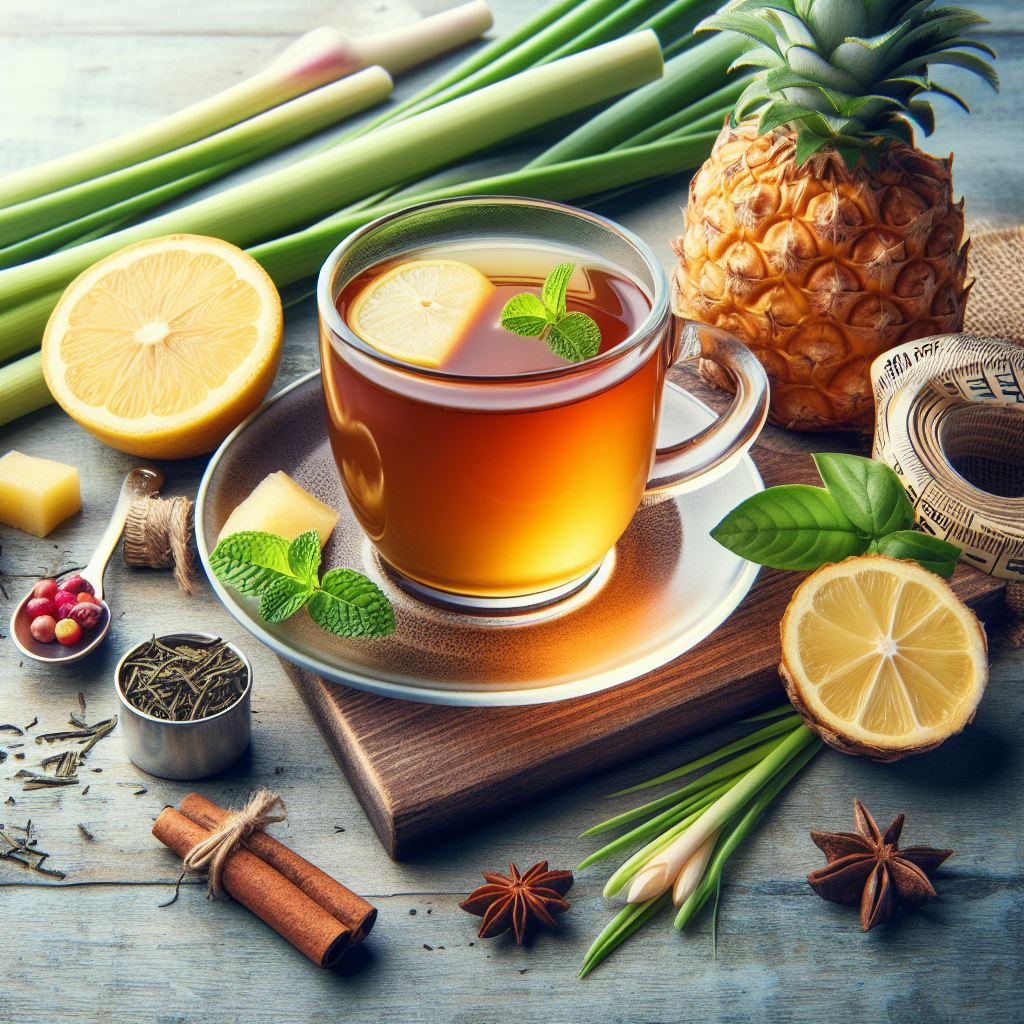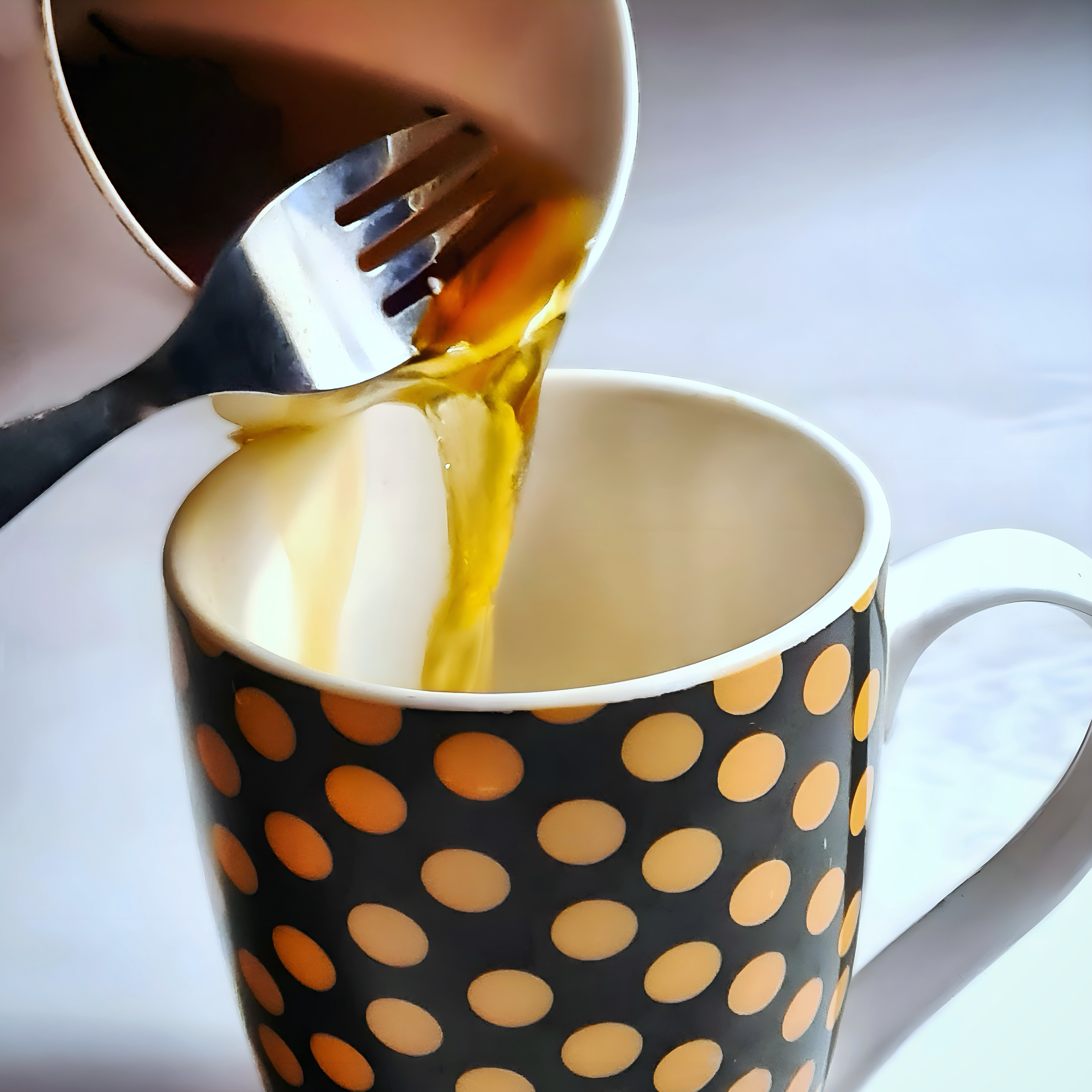The holiday season is here, and with it comes the joy of decorating your home with a beautiful Christmas tree. But did you know that you can also use your Christmas tree to make a delicious and fragrant tea? Yes, you read that right – you can brew a cup of tea from your Christmas tree!
Christmas tree tea is a fun and creative way to use your tree in a new and surprising way. Not only does it taste amazing, but it also fills your home with a wonderful aroma that will make you feel cozy and festive. Plus, it has some health benefits too, such as boosting your immune system and fighting off colds.

Selecting the Right Christmas Tree
The first step to making tea from your Christmas tree is choosing a fresh, organic tree. This is very important, as you don’t want to use a tree that has been treated with chemicals, pesticides, or artificial colors. These can be harmful to your health and ruin the taste of your tea.
To ensure that you get a natural and organic tree, look for a local farm or nursery that sells them. You can also check the label or ask the seller if the tree is certified organic. Alternatively, you can grow your own tree from a seedling or a cutting, or forage for one in the wild, as long as you have permission and know what you are doing.
Flavour & Aroma:
Another thing to consider when choosing a tree is the flavor and aroma. Different types of Christmas trees have different characteristics that can affect the taste of your tea. Some of the most popular varieties are:
- Fir: Fir trees have a mild and sweet flavor, with hints of citrus and pine. They have a fresh and clean aroma that is reminiscent of winter. Fir trees are also rich in vitamin C, which can help boost your immune system and fight off infections.
- Spruce: Spruce trees have a stronger and more bitter flavor, with notes of resin and spice. They have a warm and earthy aroma that is soothing and relaxing. Spruce trees are also high in antioxidants, which can help protect your cells from damage and inflammation.
- Pine: Pine trees have a moderate and balanced flavor, with a slight tang and a hint of mint. They have a crisp and refreshing aroma that is invigorating and energizing. Pine trees are also a good source of vitamin A, which can help improve your vision and skin health.
Caution!
You can also experiment with other types of Christmas trees, such as cedar, or cypress, and see what flavors and aromas they produce. Just make sure that you avoid any toxic or poisonous trees, such as yew, juniper, holly, or mistletoe, as they can cause serious harm to your health. If you are unsure, you can find out which pine trees are safe to use in our guide on Pine Needle Tea: Warm Up With The Ultimate Natural Cup.
Christmas Tree Preparation

Once you have selected your tree, you need to prepare it for tea-making. This involves washing the tree branches to remove any dirt or debris, and allowing them to dry thoroughly. You can also cut or break the branches into smaller pieces to make them easier to use.
To wash the tree branches, you can use a hose, a sink, or a bathtub, depending on the size of the branches. Rinse them well with cold water, and shake off any excess water. Then, spread them out on a clean towel or a baking sheet. You can let them air dry for a few hours or overnight. Try using a hair dryer or an oven to speed up the drying process if you prefer. Just be careful not to overheat or burn the branches.
To cut or break the branches, you can use a knife, a pair of scissors, or your hands, depending on the thickness of the branches. Cut or break them into pieces that are about an inch or two long. Discard any needles that fall off. You can also strip off some of the needles and use them separately. Doing it this way has a more concentrated flavor and aroma than the branches.
Flavor Profiles
Now that you have prepared your tree, you can start to explore the different flavors and aromas that it can offer. Depending on the type of tree that you have chosen, you can expect to get a range of tastes and smells. They can vary from mild to strong, from sweet to bitter, and from citrusy to spicy.
To get a sense of the flavor profile of your tree, you can try a simple taste test. Take a small piece of branch or needle, and chew it gently in your mouth. Pay attention to the sensations that you experience, such as the texture, the temperature, the sweetness, the sourness, the bitterness, and the aftertaste. You can also inhale the aroma of the branch or needle, and notice how it affects your mood and emotions.
For example, you can see how the sweet and citrusy flavor of the fir contrasts with the bitter and spicy flavor of the spruce. Or you can see how the tangy and minty flavor of the pine complements the woody and smoky flavor of the cedar.
Brewing Instructions

Now that you have explored the flavor profiles of your tree, you can start to brew your tea. This is the fun and easy part, as you only need a few basic ingredients and tools to make a delicious cup of tea from your Christmas tree.
The ingredients that you need are:
- Tree branches or needles: You can use any type or combination of tree that you like. Just make sure it is fresh, organic, and non-toxic. You can also adjust the amount of tree that you use, depending on how strong or weak you want your tea to be. A general rule of thumb is to use about a tablespoon of tree per cup of water. Feel free to experiment with more or less as you wish though.
- Water: You can use any kind of water that you prefer, such as tap water, filtered water, or bottled water. Just make sure that it is clean and safe to drink, and that it does not have any unpleasant tastes or smells that could affect the flavor of your tea. You can also adjust the temperature of the water, depending on how hot or cold you want your tea to be. A general rule of thumb is to use boiling water for fir and spruce trees, and simmering water for pine and other trees. Again, feel free to experiment with different temperatures as you wish.
- Optional ingredients: You can also add some additional ingredients to your tea, to enhance or modify the flavor and aroma of your tree. Some of the most common and popular ingredients are honey, lemon, ginger, cinnamon, cloves, and mint. You can also use any other ingredients that you like or have on hand. Just adjust the amount and type of ingredients that you use, depending on your personal taste and preference.
The tools that you need are:
- A pot or a kettle: You need a pot or a kettle to heat up the water for your tea. You can use any size or shape of pot or kettle that you have, as long as it is clean and suitable for boiling water. You can also use a microwave or an electric kettle to heat up the water, if you prefer.
- A strainer or a cheesecloth: You need a strainer or a cheesecloth to filter out the tree branches or needles from your tea. Use any kind or size of strainer or cheesecloth that you have, as long as it is clean and fine enough to catch the tree particles. You can also use a coffee filter, a tea infuser, or a tea ball, if you have one.
- A mug or a cup: You need a mug or a cup to pour and drink your tea. You can use any kind or size of mug or cup that you have, as long as it is clean and comfortable to hold. You can also use a teapot, a thermos, or a travel mug, if you want to make or store more tea.
To brew your tea, follow these simple steps:
- Fill your pot or kettle with water, and bring it to a boil or a simmer, depending on the type of tree that you are using.
- Add your tree branches or needles to the water, and reduce the heat to low. Let the tea steep for about 10 to 15 minutes, or longer if you want a stronger flavor.
- Turn off the heat, and strain the tea into your mug or cup, using your strainer or cheesecloth. Discard the tree branches or needles, or save them for another use.
- Add your optional ingredients to your tea, and stir well. Adjust the taste and sweetness as you like.
- Enjoy your Christmas tree tea, and savor the festive flavor and aroma!
Christmas Tree Tea Health Benefits

Christmas tree tea is not only tasty and fun, but also healthy and beneficial. By drinking tea from your Christmas tree, you can get some of the following health benefits:
- Vitamin C: Christmas tree tea is a great source of vitamin C, which is essential for your immune system, skin health, and wound healing. Vitamin C can also help prevent or treat scurvy, a disease caused by vitamin C deficiency. One cup of Christmas tree tea can provide you with about 50% of your daily recommended intake of vitamin C.
- Antioxidants: Christmas tree tea is rich in antioxidants, which are compounds that protect your cells from oxidative stress and damage. Antioxidants can also help fight inflammation, aging, and chronic diseases, such as cancer, diabetes, and heart disease. Some of the antioxidants found in Christmas tree tea are flavonoids, terpenes, and polyphenols.
- Aromatherapy: Christmas tree tea has a wonderful aroma that can stimulate your senses and enhance your mood. The scent of Christmas tree tea can also have therapeutic effects, such as reducing stress, anxiety, and depression, improving memory and concentration, and promoting relaxation and sleep. Some of the aromatherapy benefits of Christmas tree tea are due to the presence of essential oils, such as limonene, pinene, and camphene.
Cautions
Christmas tree tea also has some cautions and considerations that you should be aware of before drinking it. Here are some of the potential risks and side effects of Christmas tree tea:
- Allergies: Christmas tree tea can cause allergic reactions in some people, especially those who are sensitive to pine or other tree species. Some of the symptoms of an allergic reaction are itching, swelling, rash, hives, sneezing, coughing, wheezing, and difficulty breathing. If you experience any of these symptoms after drinking Christmas tree tea, stop immediately and seek medical attention.
- Toxicity: Christmas tree tea can be toxic if consumed in large amounts or if made from the wrong type of tree. Some of the signs of toxicity are nausea, vomiting, diarrhea, headache, dizziness, confusion, and irregular heartbeat. If you suspect that you have ingested a toxic amount of Christmas tree tea, call your local poison control center or emergency services. View our comprehensive article on Pine Needle Tea of find out the different pine trees that are safe or hazardous.
- Interactions: Christmas tree tea can interact with some medications, supplements, or herbs that you may be taking. Some of the interactions can be beneficial, such as enhancing the effects of certain drugs or herbs. However, some of the interactions can be harmful, such as reducing the effectiveness of certain drugs or herbs, or causing adverse reactions. If you are taking any medications, supplements, or herbs, consult your doctor or pharmacist before drinking Christmas tree tea.
Conclusion
Christmas tree tea is a creative and festive way to use your Christmas tree in a new and surprising way. By brewing a cup of tea from your Christmas tree, you can enjoy a delicious and aromatic drink that will make you feel cozy and festive. Plus, you can also get some health benefits, such as vitamin C, antioxidants, and aromatherapy.
However, Christmas tree tea also has some cautions and considerations that you should be aware of before drinking it. You should always choose a fresh, organic, and non-toxic tree, and prepare it properly for tea-making. You should always double check the tree you have if you are unsure, and seek medical help if needed.
I hope you enjoyed this blog post recipe on how to make tea from your Christmas tree, and that you will try this special recipe this holiday season. If you do, please share your experiences and variations of the recipe with the community!
Discover More Tea-Related Articles:
- What Tea Has the Most Caffeine? The Answer Might Surprise You!
- Da Hong Pao Tea – The Most Expensive Tea in the World
- How to Make the Traditional Tea of Palestine – Shay bil Maramiya
- The Best Non Dairy Milk to Compliment Your Tea
- Osmanthus Tea: How to Brew, Enjoy, and Use This Floral Delight





Leave a Comment